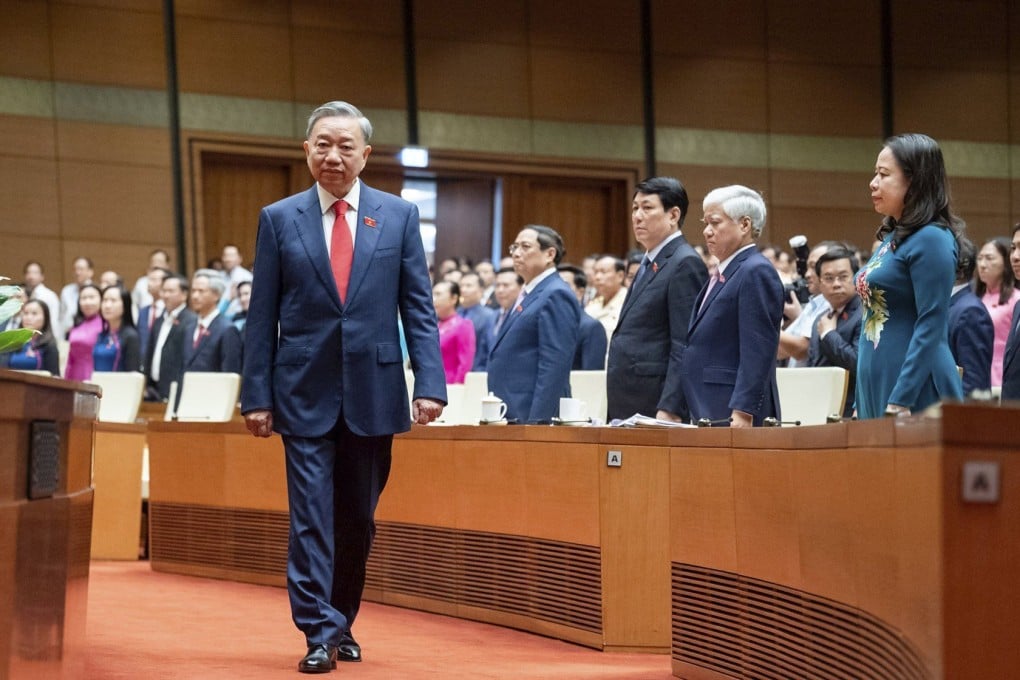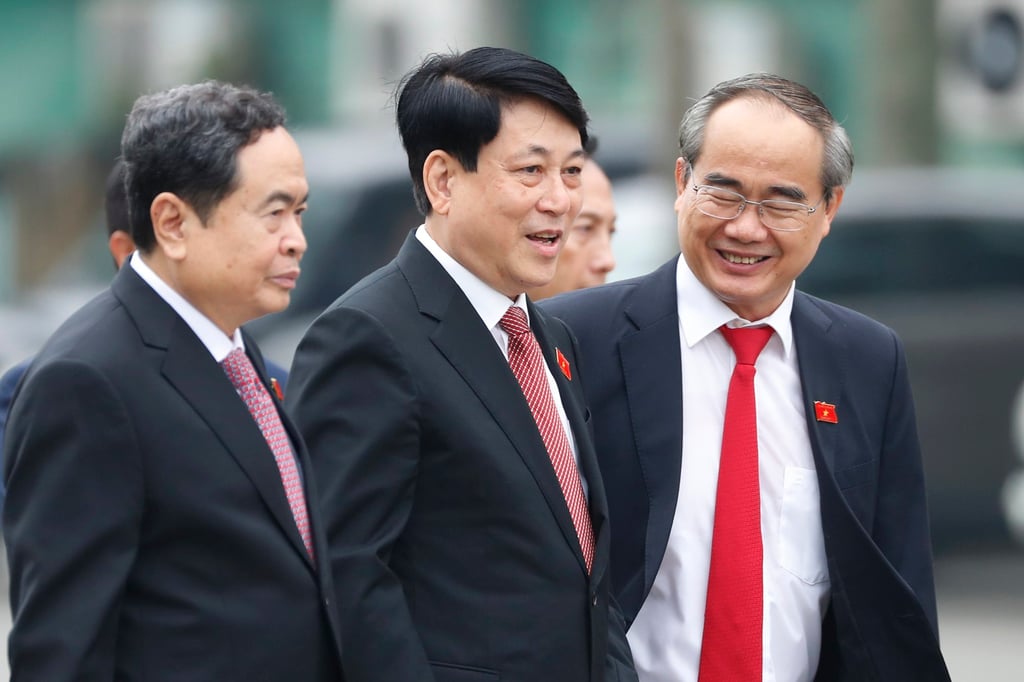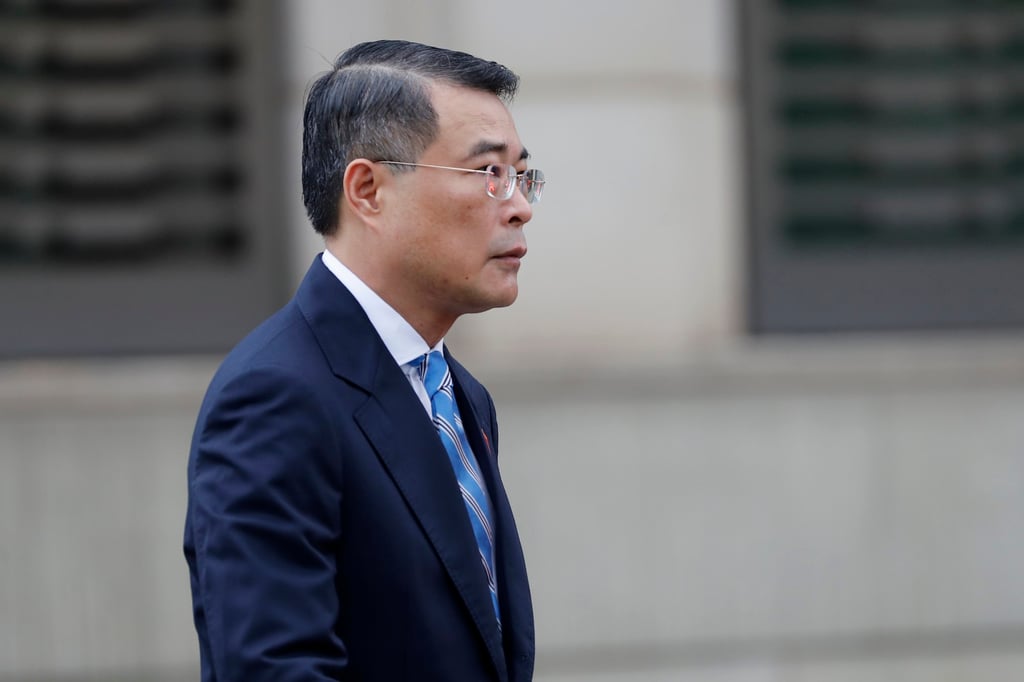Asian Angle | Vietnam’s political reshuffle brings respite as To Lam tightens grip on power
- Inducting generals, ethnic and regional leaders into the party’s highest ranks is expected to steady the ship after years of power struggles

It is crucial, however, to assess the new faces who have been recently promoted to the Politburo and Secretariat, the most consequential political agencies in the one-party state. Given the timing of the appointments as well as their criteria, they are likely to remain at the top echelon of the nation’s leadership after the 14th Congress in 2026.
At the CPV’s 9th plenum on May 16, four new Politburo members were elected to replace the six leaders ousted since 2021. They were Le Minh Hung, former CPV Central Committee chief of staff; Bui Thi Minh Hoai, Central Mass Mobilisation Commission head; Do Van Chien, Vietnamese Fatherland Front chairman; and Nguyen Trong Nghia, Central Propaganda Commission head. Vice-minister of Public Security Luong Tam Quang was chosen to head the Ministry of Public Security, a Politburo-level position, suggesting his imminent promotion to the key policymaking body.

The CPV Secretariat, which manages daily party affairs, also saw a restructuring at the top. General Luong Cuong, the head of the General Politics Department of the Vietnam People’s Army, succeeded Truong Thi Mai as the new permanent member of the Secretariat. General Trinh Van Quyet replaced Cuong, making him eligible to join the Secretariat. These reshuffles significantly boost the army’s presence in the CPV’s top institutions, with three Politburo members (Luong Cuong, Nguyen Trong Nghia and Minister of Defence Phan Van Giang) and two Secretariat members (Trinh Van Quyet and Nguyen Trong Nghia, who holds this position concurrently with his Politburo role). This will help balance the power against the public security apparatus, which is dominant in the elite institutions. In another notable promotion, Vice-Minister of Public Security Nguyen Duy Ngoc has become the CPV Central Committee’s chief of staff. This hints at his likely elevation to the Secretariat soon.
While further additions might follow, such as the promotions of a new vice-prime minister and the National Assembly’s vice-chair, the latest appointments have filled nearly all vacancies left by the leaders purged in the anti-corruption campaign. The moves have stabilised the political system after a period of turbulence ahead of the party congress that will pave the way for a new leadership transition.

A noticeable trait among these seven new leaders is their background in either the party apparatus or the police and military. Only Le Minh Hung, former governor of the State Bank of Vietnam, qualifies as a technocrat (someone with technical or economic expertise). This makes two technocrats, along with Hanoi’s party secretary Dinh Tien Dung, out of 16 Politburo members, compared to seven out of 16 at the 12th Congress in 2016 and five out of 19 at the start of the 13th Congress in 2021. This is the lowest ratio of technocrats in the Politburo since 1997. The party often follows the principle of vừa hồng vừa chuyên (“both red and expert”) when selecting leaders – meaning they must demonstrate commitment to communist ideology as well as technical expertise. However, the emphasis has now decisively shifted more towards ideological purity.

